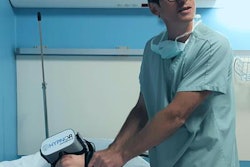Dear Imaging Informatics Insider,
Dissatisfaction among referring physicians with the ambiguity and variation that can be found in traditional prose-style radiology reports has driven the adoption of structured reporting techniques in recent years. But how does structured reporting actually affect the language used in radiology reports?
Researchers from University Hospital Basel in Switzerland sought to answer this question by analyzing more than 1.3 million radiology reports produced at their institution. They found that switching to structured reporting yielded measurable improvements in standardization and clarity.
Instagram is a popular social networking service for sharing photos and videos. But it also has enormous potential for radiologists to raise their profile and make their work more visible in healthcare, according to a group from Marqués de Valdecilla University Hospital (known as Valdecilla) in Spain.
In a digital poster at RSNA 2019, the team shared how Instagram can serve as a valuable teaching and communication tool, helping radiologists find useful information, share and discuss radiological images, and improve their communication with clinicians and patients. It may also inspire more medical professionals to choose radiology as their specialty.
Email is an easy means to quickly transfer patient data and images, but it's critical to ensure that sensitive information remains secure. To help with this challenge, the U.K. Royal College of Radiologists has produced 10 simple email rules to follow when sharing patient information, including never autoforwarding email to other accounts and marking all email subject lines as "confidential."
In the era of artificial intelligence, imaging specialists need to demonstrate their love of their profession by promoting visibility and understanding of radiology's role in order to ensure the discipline is fully appreciated by medical colleagues and patients, according to Prof. Jacob Sosna, president of the Israel Radiological Association.
A dose management culture in radiology can yield clinical excellence, but achieving this goal requires changing the work routine and a European effort to help raise awareness, according to a presentation at the European Society of Medical Imaging Informatics. In case you missed it, Steve Holloway of Signify Research also recently discussed why electronic medical records will not replace dedicated imaging IT software any time soon.
If you have any tips or suggestions for topics you'd like to see covered in the Imaging Informatics Community, please feel free to drop me a line.



















